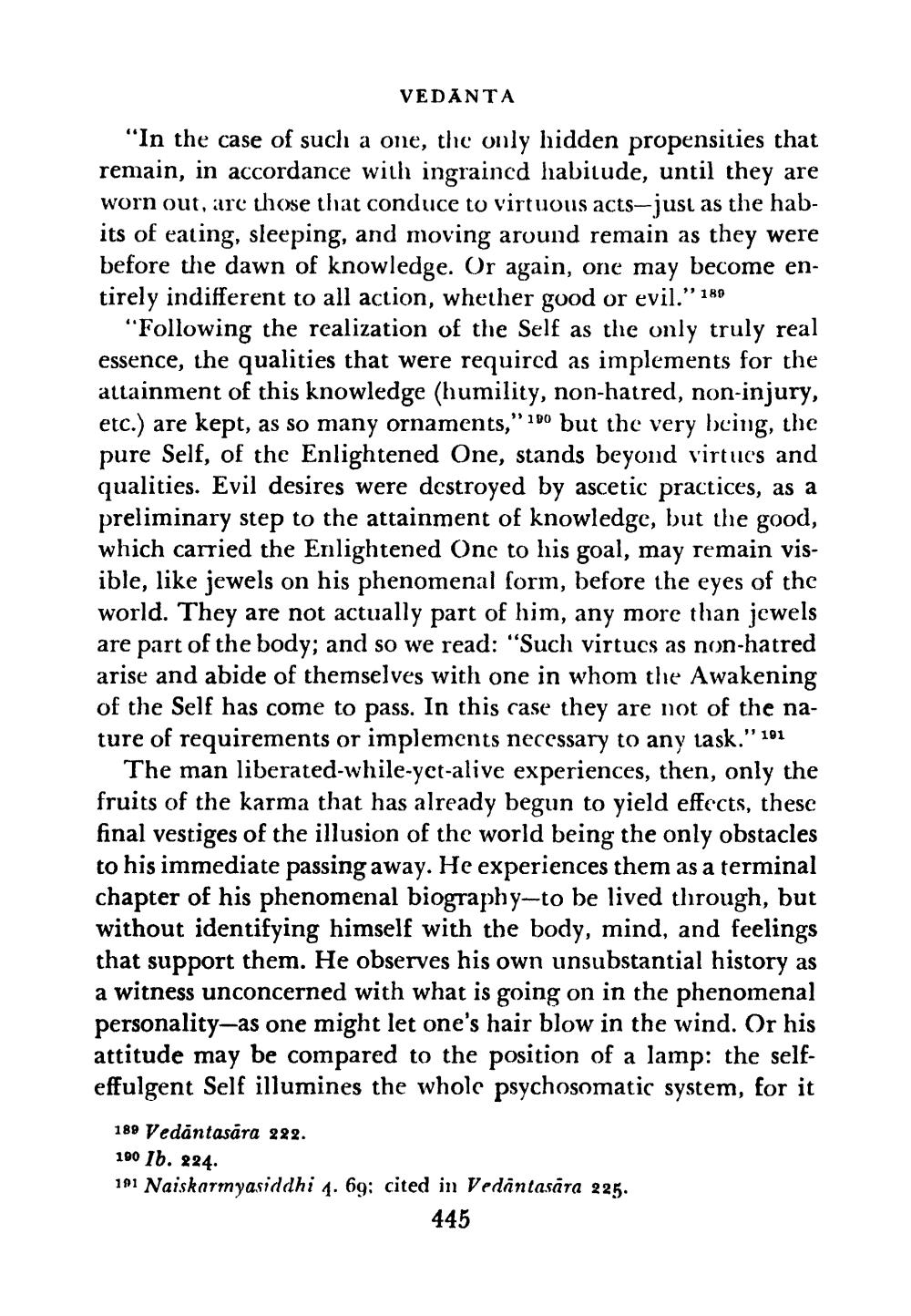________________
VEDANTA
"In the case of such a one, the only hidden propensities that remain, in accordance with ingrained habitude, until they are worn out, are those that conduce to virtuous acts—just as the habits of eating, sleeping, and moving around remain as they were before the dawn of knowledge. Or again, one may become entirely indifferent to all action, whether good or evil." 189
"Following the realization of the Self as the only truly real essence, the qualities that were required as implements for the attainment of this knowledge (humility, non-hatred, non-injury, etc.) are kept, as so many ornaments,' ," 190 but the very being, the pure Self, of the Enlightened One, stands beyond virtues and qualities. Evil desires were destroyed by ascetic practices, as a preliminary step to the attainment of knowledge, but the good, which carried the Enlightened One to his goal, may remain visible, like jewels on his phenomenal form, before the eyes of the world. They are not actually part of him, any more than jewels are part of the body; and so we read: "Such virtues as non-hatred arise and abide of themselves with one in whom the Awakening of the Self has come to pass. In this case they are not of the nature of requirements or implements necessary to any task." 191
The man liberated-while-yet-alive experiences, then, only the fruits of the karma that has already begun to yield effects, these final vestiges of the illusion of the world being the only obstacles to his immediate passing away. He experiences them as a terminal chapter of his phenomenal biography-to be lived through, but without identifying himself with the body, mind, and feelings that support them. He observes his own unsubstantial history as a witness unconcerned with what is going on in the phenomenal personality-as one might let one's hair blow in the wind. Or his attitude may be compared to the position of a lamp: the selfeffulgent Self illumines the whole psychosomatic system, for it
189 Vedantasära 222.
190 Ib. 224.
101 Naiskarmyasiddhi 4. 69; cited in Vedāntasära 225.
445




